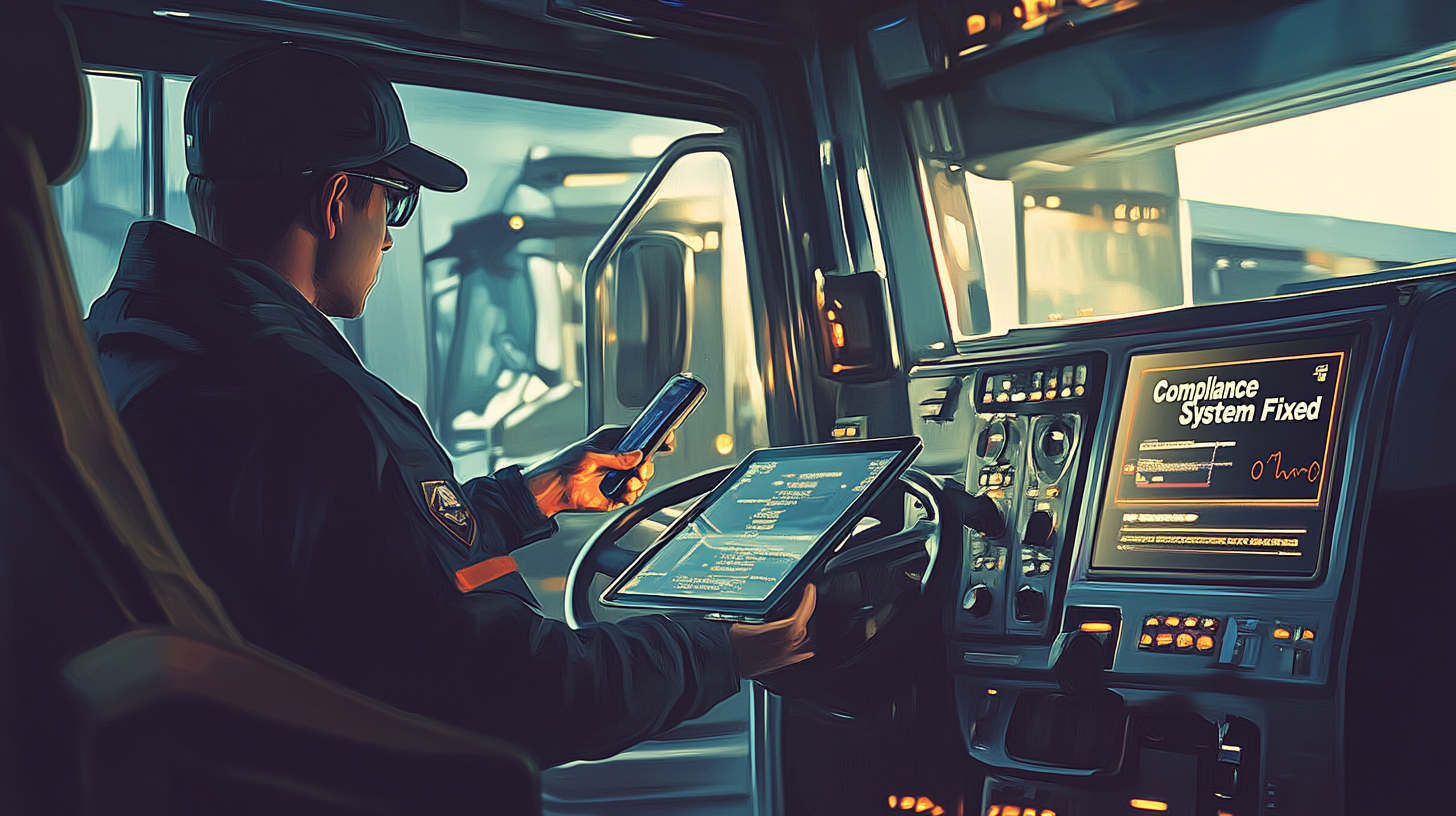Avoid Fines and Downtime With These Practical Fixes
1. Using Outdated or Uncertified ELD Devices
One of the biggest ELD compliance issues is relying on outdated or uncertified devices. Using ELDs that don’t meet the FMCSA’s current certification standards can put your fleet at risk of violations during inspections. Make sure your ELD device is on the official FMCSA certified ELD list to stay compliant and avoid penalties.
2. Insufficient Driver Training on ELD Usage
Proper training is critical for ELD compliance. Many drivers only receive basic instruction and are unprepared to handle common challenges such as editing logs, troubleshooting malfunctions, or providing records during roadside inspections. Comprehensive ELD training for drivers helps avoid mistakes that could lead to costly fines.
3. Failing to Properly Save and Store ELD Data
ELD data must be stored and accessible for the required time frame according to FMCSA regulations. Many companies fail to back up this data or lose access when switching systems, risking compliance violations. Implement reliable ELD data management practices to ensure records are secure and readily available for audits.
4. Ignoring ELD Malfunctions
When an ELD malfunctions, federal rules require immediate action: logging the issue, reporting it, and fixing the device promptly. Ignoring malfunctions or lacking proper training on handling them can lead to violations. Ensure your fleet has a clear ELD malfunction policy and trains staff accordingly.
5. Not Updating Hours of Service (HOS) Rules in Systems
HOS regulations change periodically, and your ELD system must reflect these updates accurately. Failure to update HOS rules or inform drivers can lead to inadvertent violations of driving limits. Keep your HOS rules updated in your ELD software and communicate changes clearly.
6. Cross-Border ELD Compliance Challenges
Trucking companies operating between the US and Canada face unique challenges, as both countries have different ELD regulations. Use ELD systems that comply with both US and Canadian ELD mandates and ensure drivers understand the distinctions to avoid cross-border compliance issues.
7. Lack of Coordination Between Dispatch and HR Departments
Even with the best technology, poor communication between dispatch, HR, and safety teams can cause compliance failures. Misaligned schedules, overlooked log checks, or inconsistent policies increase the risk of errors. Foster strong collaboration and shared responsibility for ELD compliance across departments.




